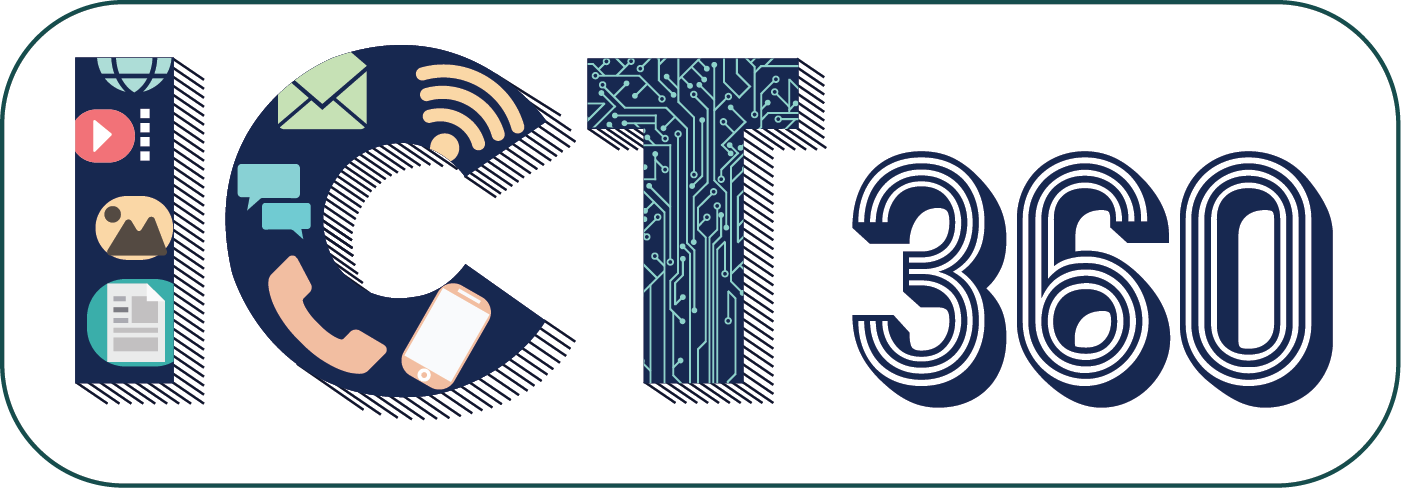Tech Skill Development

To keep pace with constantly changing technology and deliver faster and more innovative solutions, organization are looking to implement technology skill development strategies to upskill their leaders and employees. Be it education, software & services, FMCG, or financial services, organizations are now focusing on technology skill development and continual improvement of their staff/employees to maintain a competitive edge.
To provide holistic education and close the skills gap between the current state of learning outcomes and what is truly needed in the future work environment, NEP recommends classroom transactions to shift towards tech skill development and competency-based learning from early childhood education through higher education.
As per NEP, teachers need to equip themselves with ICT/technology skills through Continuous Professional Development Programs. It will help them to deliver effective 21st century learning, enhance student engagement & learning outcomes and prepare them for the digital future.
Barriers to tech skill development:
- One-size-fits-all training methods
- Organizational Roadblocks
- Hiring new talent rather than upskilling existing talent
Tech skill development strategies to enhance efficiency & outcome

Upskill existing staff/workforce
Organizations/Institutions expect their staff to have the right skills to slot right into projects. Their existing staff maybe willing to learn those skills but may lack opportunities. So, organizations should focus on upskilling their existing staff which will also save their cost of hiring new talent. According to research, below are the technologies, staff/employees want to learn to enhance their tech skills.

Customized learning approaches
Personalized skill development and deep technology expertise are essential to the growth of an organization/institution. A customized learning approach can help match an individual’s motivation and skill sets with the organization’s needs.
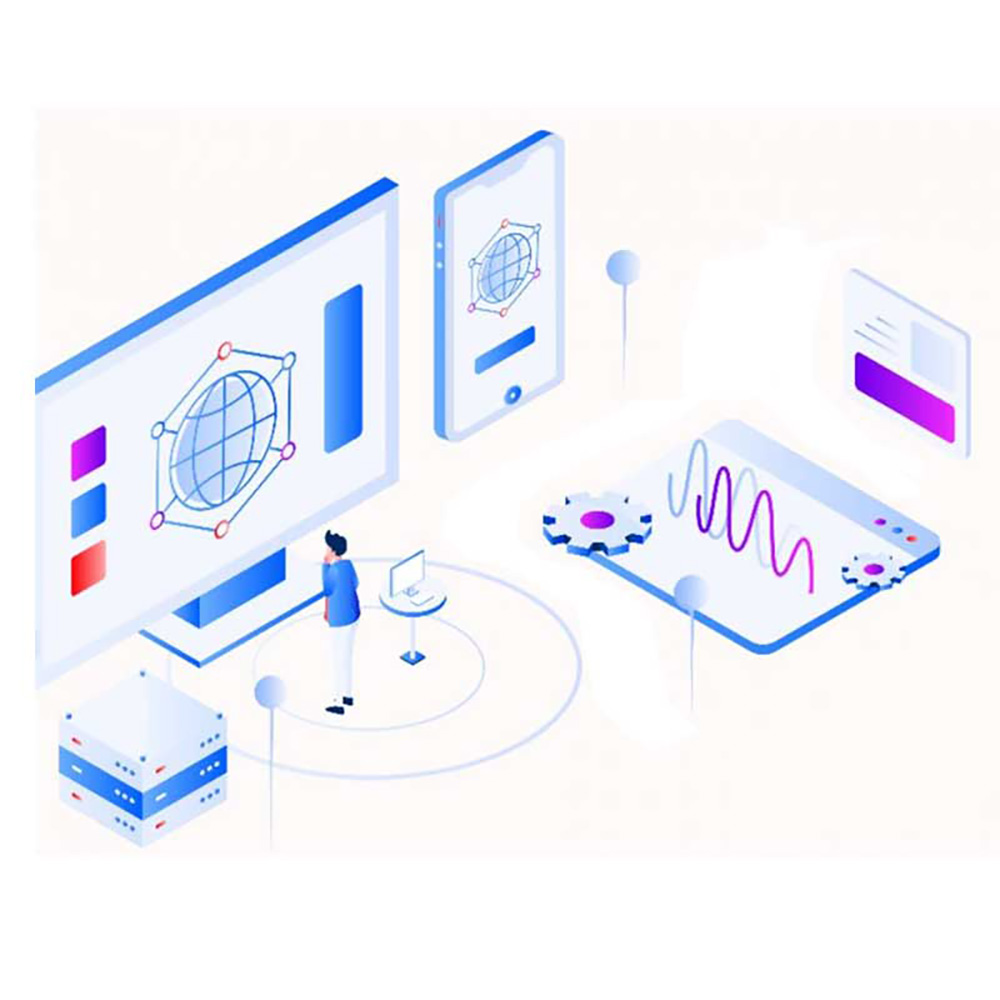
In-demand skills include:
- Cloud management
- Security management
- Coding and programming
- Data management
- Analytics/business intelligence
- Project management
Preferred learning method
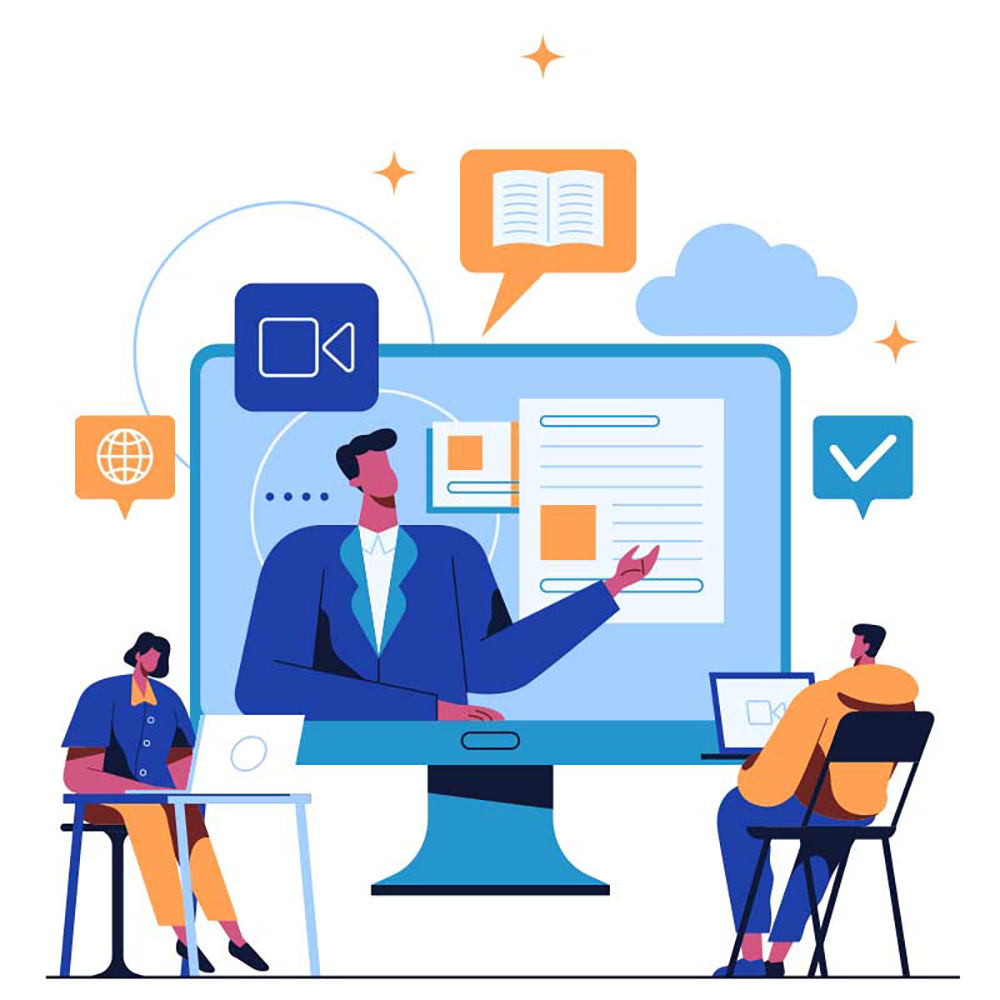
According to research, online self-paced course is the preferred learning method among the staff.
Below is a snapshot of preferred learning methods among different age groups.
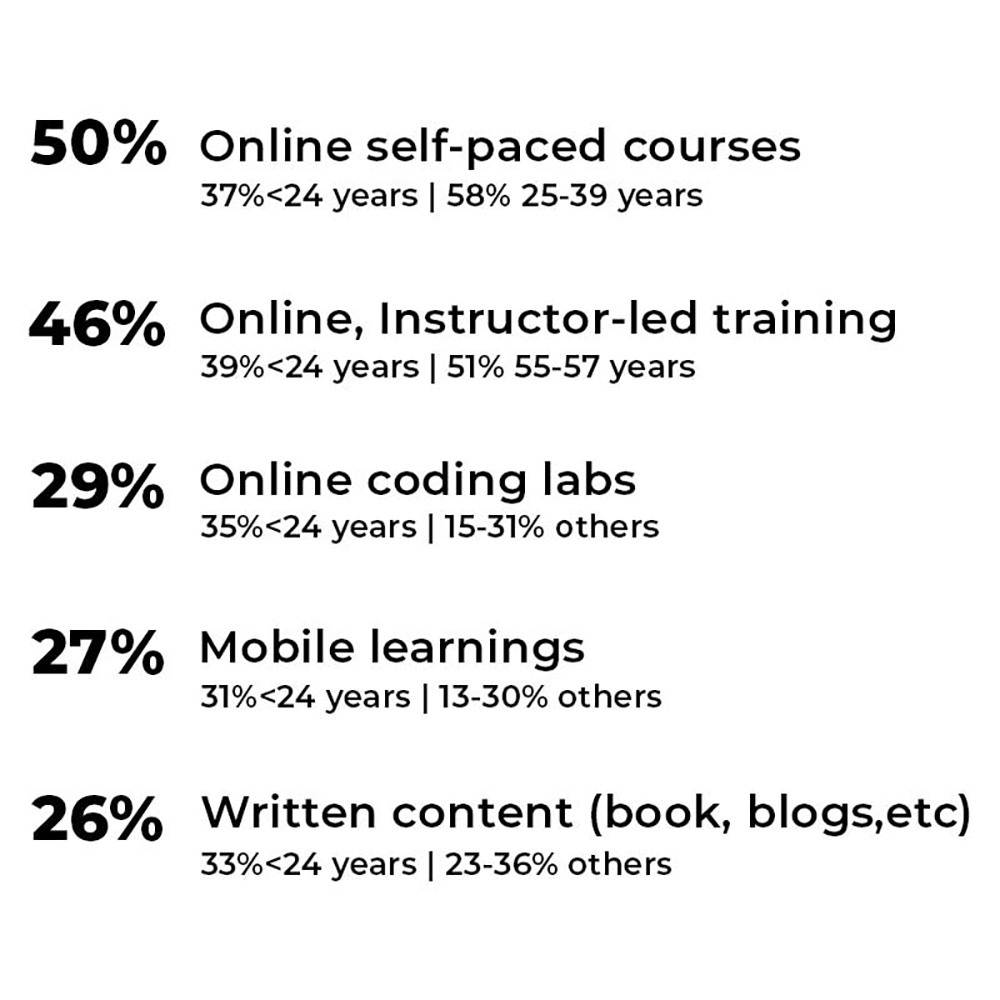
Investment in tech skill development
Tech skill development of the staff requires an actual investment from the organization/institution. Hurdles that prevent the learning & development of the staff include lack of support from their employers, other work demands and budget constraints. By investing in their existing staff, organizations can save themselves the hassle of hiring new talent.
Below is a snapshot of hurdles that prevent learning & development of the staff.

Learning styles
Staff/employees require leadership support in terms of time, resources, space, personalized skill development and commitment from their organization/institution that it values their advancement and alignment with organizational strategies.
Below is a snapshot of learning styles preferred by different age groups.
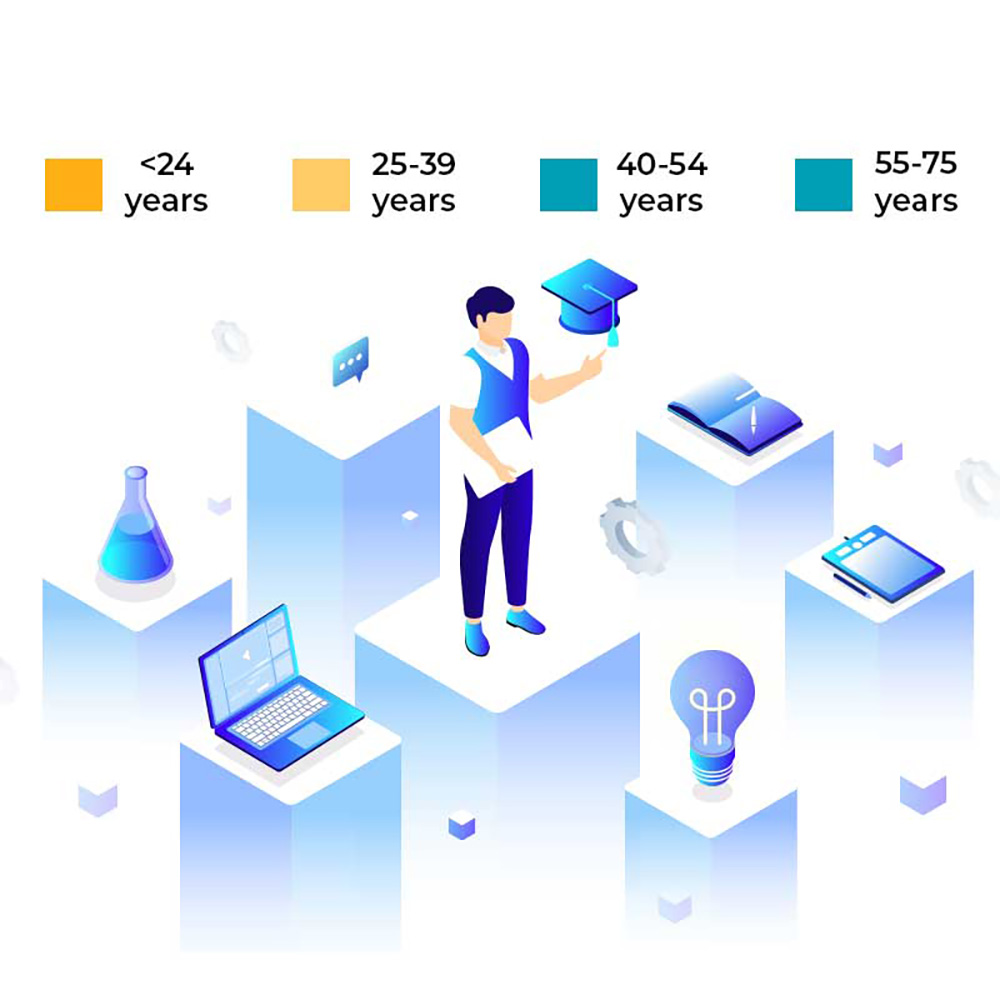
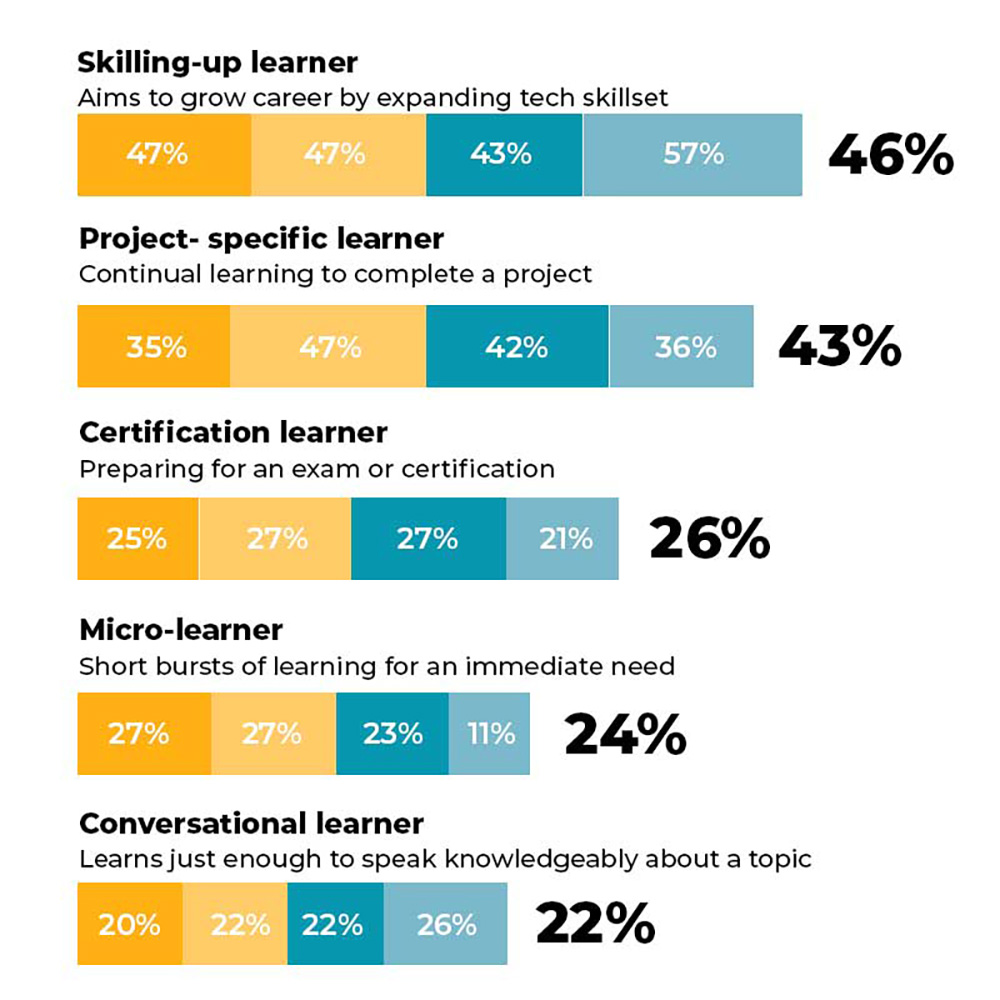
Microlearning during work hours

The median length of online program usage is 3 hours, and the mean is 6 hours. Most of the staff do not have such large blocks of time to dedicate for upskilling during work hours.
Organizations/institutions can address this issue by offering tech skill development opportunities that work in short, frequent bursts. According to research, staff under age 55 are two times more likely than those over 55 to undertake microlearning (short bursts of learning) for an immediate need.
Rewards & Recognition
Continual learning and skill development help the staff to demonstrate value to their organizations/institutions. Most organizations tie compensation to responsibilities and expectations. They correlate skill development with an increase in salary.
Below is a snapshot of salary increase in the past 12 months due to new skills acquired by the staff.

Organizations can amplify staff engagement through rewards and recognition. Only organizations that remain competitive will be able to give salary hikes tied to tech skill development.
Job satisfaction
Leaders commonly fear that once their staff has developed in-demand tech skills, they will leave for other organisations. But according to research, it is not the norm; tech skill development increases job satisfaction and incentivizes the staff to stick with their organization/institution.
Continual and relevant tech skill development addresses personal growth and learning of the staff. It rewards them with competitive compensation & benefits, makes them feel progressive and motivated, and minimizes negative feelings of micromanagement, frustration, disengagement, and being siloed.
Below is a snapshot of staff job satisfaction post tech skill development.

Conclusion
Leaders are responsible for upskilling their staff to create a competitive advantage. This can only be achieved with a mature technology skill development strategy. Leaders and staff must be aligned on the most efficient way to build and deploy new technology skills so that they can meet the organisational goals while achieving their personal growth & development.
At ICT 360, we provide advanced tech curriculum for schools – grades 1-10 – for AI, AR, VR, Coding, Media Design, App Design, Game Design, Web Design, 3D Printing, Robotics, IoT, Cloud Computing and all futuristic technologies to enable students to become Innovators, Collaborators and Problem-Solvers.
ICT 360 serves as a one stop solution for all ICT requirements of a school. With NEP aligned & STEM accredited ICT curriculum – this unique platform offers Teacher Development Trainings with Certifications, Project PPTs, Lesson Plans, Assignments, Learning Resources, Technical Support, Assessments, Reports, and LMS for students and teachers for synchronous & asynchronous learning to equip them with 21st century skills and prepare them for the tech-driven future.
Powered by Froala Editor
